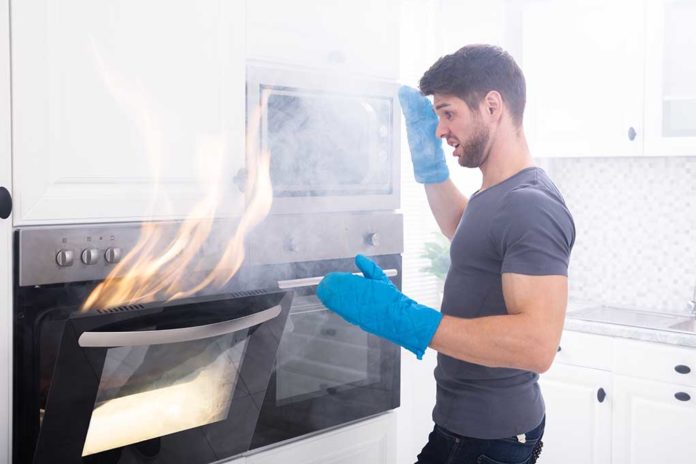
(GoHealthier.com) – We all want to stay healthy and avoid accidents, but most of us might not think about getting injured in our own homes. Unfortunately, home-based hazards are common. The good news is we can often avoid them with a little knowledge and care. Here are five frequent home hazards.
1. Choking and Suffocation
Every year, people choke or suffocate in their homes or experience some form of strangulation. In 2015, choking accounted for 5,051 deaths. More than half of those were people over the age of 74. Anyone can get food lodged in their throat, but having dentures or being unable to swallow easily puts individuals at a greater risk.
When it comes to unintentional strangulation, young children are at a higher risk. They may end up wrapped up in the cords from blinds or get into plastic bags when playing around the house.
There are a number of things we can do to reduce the risk of this home hazard. Chewing food properly, keeping cords, bags, and small objects away from children, and putting child locks on cabinets may help reduce choking and suffocation risks.
2. Slips and Falls
Falls in the home are very common, and every year they claim around 6,000 lives on average. These include falls from ladders or down stairs, along with falls in the bathtub or shower area. Bathroom-based falls may cause significant injury and may even lead to death, especially in older adults.
To reduce the risk of falling, install grab bars in the shower and strong railings on any stairways. Also, don’t climb ladders without someone else present. Also, never use kitchen chairs to reach items in higher cabinets. Always supervise children, so they don’t fall and become injured.
3. Burns and Fires
From a hot stove burner to a scalding hot drink, burns and small fires are common issues around the home.
When it comes to burns, many victims are children, often the result of receiving drinks that are too hot for them. Cooking fires are also very common, as are electrical fires.
There are approximately 353,100 home fires a year, resulting in an average of 2,620 annual deaths.
To reduce risk of burns, check the temperature of drinks before giving them to the child. Also, follow proper cooking techniques, and make sure there’s a fire extinguisher in the kitchen. Working smoke alarms and an updated electrical system are other good ways to reduce burn and fire risks in the home.
4. Drownings and Near Drownings
Bathtubs and backyard pools may both be dangerous, especially to small children. Young kids are the majority of the drowning victims in home-based accidents, but the elderly also constitute a significant portion of these victims. It takes as little as one inch of water for a child to drown, and nearly 800 people drown in or around their homes every year.
Reducing risk starts with never leaving small children unattended around water. That includes in the bathtub, but also in a swimming pool or anywhere there’s standing water. Make sure there’s a fence and locked gate around any pool on the property and that standing water issues are addressed to lower the risk further, as well.
5. Accidental Poisoning
Poisoning can happen all too easily with all the chemicals we typically find in a home. Most poisoning incidents happen with children who’ve ingested them after finding them in unsecured storage. In adults, the most common type of poisoning comes from mixing medication and alcohol or accidentally taking too much of a prescribed medication.
When we have children in the house, even occasionally, we can reduce risks by using cabinet locks and keeping chemicals on higher shelves where children can’t reach. Adults should follow their medical professional’s directions for their medications and avoid alcohol when taking medication. These steps can be critical. Poisoning is more common than we may think, with approximately 2.2 million cases taking place in 2015 alone.
Our homes are our sanctuaries, and we often don’t realize there are real risks there. By making a few adjustments and taking some extra care, we may significantly reduce those risks. If we mitigate risks to the best of our abilities, then we’ll be better able to relax and enjoy our time at home.
~Here’s to a Healthier Life!
Copyright 2024, GoHealthier.com














